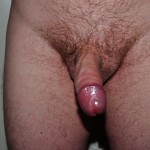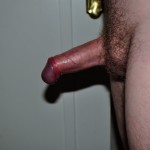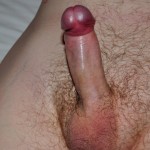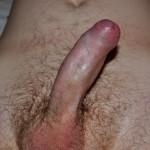Author: celt04
Scheduling and admission
Again I had to wait a while for my surgery date. This time it was complicated for them to coordinate the local schedules with the schedule of the visiting surgeon. I eventually got a letter to let me know that it would be the 12th of May.
Two weeks before surgery I had an appointment for admission. A nurse in urology took blood and urine samples and measured my pulse and blood pressure. Then I got sent off to a different part of the hospital to meet an anaesthetist, who seemed happy that I wouldn’t pose any problems.
The whole thing was finished in just over an hour.
Around this time I took some “before” photos, so that I could compare afterwards. You can see them by clicking here.
Urethrography and discussing urethroplasty
Before I could see the senior urologist he wanted to know what he was dealing with, so I got an appointment for a cystourethrogram (x-ray of the urethra and bladder).
They’d be taking two related x-rays, a retrograde cystourethrogram (RCUG) as they squirted contrast through my urethra into my bladder and then a voiding cystourethrogram (VCUG) as I emptied my bladder.
The radiology staff didn’t seem especially familiar with the procedure, so even with a large crowd coming and going and giving advice it took over an hour. They seemed to have used too much numbing gel; every time they tried to inject the contrast the catheter would pop out.
The RCUG was eventually successful but the VCUG didn’t work so well. I found it very difficult to urinate on demand while lying on my side and having not had anything to drink for a couple of hours.
My x-ray appointment was at the end of January but I couldn’t get an appointment with the urologist until mid-March, partly because I was away quite a lot during those months.
When I finally saw the urologist he was the first doctor I’d met in the urology department with any bedside manner and he was very open to discussing the options.
I’d used the time before the appointment to continue my research and I’d found that in the few studies that actually tried to evaluate patient satisfaction buccal mucosal graft (using skin from the inside of the mouth) did better than penile flap (using skin from the penis) urethroplasty. It seems that the cosmetic results are better, there are fewer problems with skin tightness and less post-urination dribbling with the buccal mucosal graft.
The doctor would have preferred to use a penile flap and was more familiar with the technique. I had an especially awkward moment lying exposed on the examining table when he told me that there seemed to be plenty of spare skin and I had to try to explain that that’s not the case when my penis is erect.
He’d already discussed my case with a colleague in another county who had more experience with buccal mucosal grafts and we agreed that we’d go for that option and that he’d bring in his colleague to assist with the surgery.
The return of the stricture
Before the infection I’d had a couple of days of enjoying peeing normally, with a really strong flow. After the infection I assumed that the flow was being restricted by my swollen prostate. Once my prostate was back to normal it was obvious that the stricture had recurred within a month of the urethrotomy.
Reading the research on urethral strictures it seems that urethrotomy is often unsuccessful with strictures of the penile urethra, especially if they’re quite long. In some places they’re recommending doing urethrography to check the size and location before performing urethrotomy and in some cases going directly to urethroplasty instead.
At my next visit to urology, three months after the urethrotomy, the doctor was determined that the standard treatment was to repeat the urethrotomy. Fortunately I’d prepared and was able to insist that all current research indicated that the first one had been pretty much doomed to failure and any successive urethrotomy had almost no chance of success (due to the location and speed of recurrence). After trying to scare me with warnings of the dangers of urethroplasty he finally gave in and agreed to refer me to a more senior urologist.
After urethrotomy
So a week after the surgery I had the usual problems that guys seem to have with catheters but that nobody bothers to tell you about.
Being woken up during the night when erections meant that my penis simultaneously tried to pull out the catheter and scraped it over the inside of my urethra was a new experience, and one I could have happily done without. After a couple of days I learned to tape the catheter into a position that minimised the unpleasantness.
I think that night-time erections were a particular problem for me because my penis changes a lot in size between flaccid and erect. So an erection meant pulling an extra 10 cm or so of catheter over my wounded urethra. It was also a latex catheter and they seem to be stickier than the other types.
During the week with the catheter I worked from home and tried to avoid walking around too much. I never did find a position for the tubing that didn’t become uncomfortable while walking.
Having the catheter removed was very easy, although slightly delayed by a massive failure of the county’s healthcare IT system that morning. The nurse deflated the balloon and pulled it out smoothly, all I felt was a slightly odd sensation and it was done.
I went straight back to work afterwards and discovered that the catheter had left my prostate a bit tender, so I needed to use a soft cushion on my office chair.
A few days later I started feeling like I had flu or something. Several colds and flus were going around the office at the time but my husband insisted I go to the emergency room and it turned out I had a fairly severe urinary tract infection. By the time I was admitted to the urology ward, around midnight, I was sweating profusely and feeling pretty grim.
They kept me in the hospital for three days while the antibiotics started to take effect. When I was discharged I had a meeting with the doctor who’d done the urethrotomy. I was a bit concerned that I hadn’t had any night-time erections for a few days (which was probably just due to being really ill) but he just casually said that it could be a complication of the surgery and made a weird comment about the next step being anastomosis and that that would likely cause shortening of the penis. It was an odd thing to say both because anastomosis isn’t at all a suitable surgery for strictures in the penile urethra and because it had nothing to do with the question I’d asked.
After a week of recovery I could concentrate for long enough to go back to work, although the infection had settled in my prostate and needed another couple of weeks of antibiotics to be completely rid of it.
Urethrotomy
Summer holidays are a big thing here in Sweden. Most people take four weeks off in a block and that includes hospital staff. I had no chance of getting my urethrotomy done before the summer holiday period started and we’d already booked holidays for most of August.
So when I got back from vacation at the end of August there was a letter with an appointment for outpatient surgery in just over a week. Somewhat inconveniently it was going to be at a small hospital (that seems to exist largely for political reasons) about 60 km away, instead of the county’s main hospital that’s a 10 minute bus ride away.
I’d still had almost no information about the procedure, apart from some very generic instructions about not eating or drinking and washing with special disinfectant sponges before the operation.
On the day my husband drove me to the hospital and we sat and waited. I had a quick chat with the surgeon, a nurse and the anaesthetist and got changed into the lovely stockings and nightgown. Then I waited some more.
Eventually I was called into the operating theatre, got myself settled on the table, hooked up to various machines and drips and was discussing the Scottish independence referendum with the surgeon when the anaesthetic took effect.
I woke up in the recovery ward, feeling pretty OK but still a bit confused. My husband was allowed in and the surgeon came in to tell me that the operation had been a success. He said he’d had to cut away 5 cm of stricture, although it later turned out that he hadn’t bothered to record this anywhere.
Once I’d had a sandwich and some (horrible) coffee I was judged fit to go home. They’d put in a foley catheter during the surgery but I didn’t really get much in the way of instructions of supplies for looking after it. I was told to make an appointment with the nurse at my GP to have the catheter removed after a week.
First investigations
First I got called up to the hospital for a CT scan, to make sure the blood wasn’t coming from my kidneys. It wasn’t, so I got an appointment at the urology clinic. By this time it was the end of June.
Before my appointment I had to record frequency and volume of urination and (separately) how long the first 100 ml of urine took. My trip to the clinic started with uroflowmetry, peeing into a machine that records the volume of urine over time. That showed that there was definitely something wrong, the flow was way too low.
The doctor then did a cystoscopy, or at least tried to. He only got a couple of centimetres in before hitting a blockage, with only about a 1 mm passage through it. That explained the difficulties.
He then said he’d have me scheduled for a urethrotomy (DVIU), without really explaining anything about the procedure. He seemed more concerned about the difficulties of scheduling it, with very little time left before everyone went on their summer holidays, than talking to me. Unfortunately that turned out to be a pattern in the urology department. They didn’t do any further investigations of how long the stricture was.
Getting to see a urologist
I made an appointment at the local hospital’s STD clinic, thinking they were a good way to get into the system. They found evidence of inflammation in my urethra (which has been happening for years, without any positive test results for infection) and immediately assumed it was being caused by an STD and wanted me to start on antibiotics while I waited for test results.
Instead of waiting and taking antibiotics that I was fairly sure I didn’t need I made an appointment with my GP. He also immediately leapt to the conclusion that it was probably chlamydia. Fortunately my husband, who is himself a doctor, was there and pointed out that for men any sign of blood in the urine means that you should be referred to urology. The GP grudgingly gave in and referred me.
The STD tests came back negative, unsurprisingly.
Introduction
Like a lot of guys, I’d noticed the force of the flow when I was peeing decreasing over the years. I’d assumed it was just a normal part of getting older. In May 2014 it finally got to the point where I thought there must be something wrong. Peeing was becoming painful and the final straw was when I noticed a bit of blood.
It turned out to be a urethral stricture, scar tissue narrowing my urethra, and that diagnosis has so far resulted in lots of visits to the hospital and several surgeries: a urethrotomy (plus two failed attempts) and two buccal mucosal graft urethroplasties. In particular it was a stricture of the pendulous urethra, or distal urethra, within the external part of the penis. That seems to be quite unusual, especially when it’s not caused by disease or injury.
I’ve noticed that there’s not a lot of information out there about strictures and the treatments for them, especially from a patient’s point of view. So I’m writing this blog in the hope that it might be helpful for other guys with the same problem. If you want to get in touch with me you can use this contact form.
There are pictures to accompany some of the posts, but you’ll have to click a link to see them so that nobody unwillingly sees pictures of a penis. You can also find them in the NSFW category.






